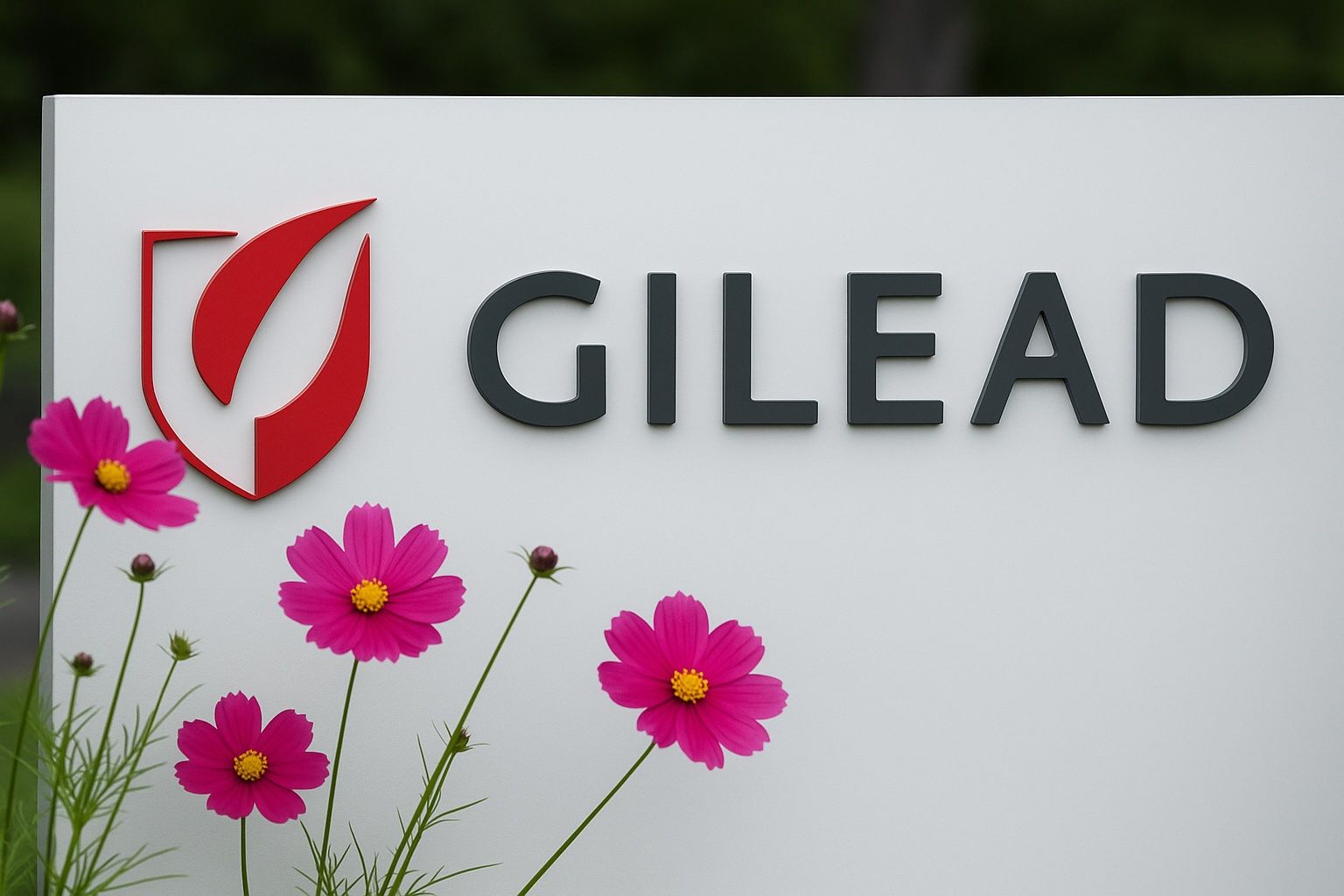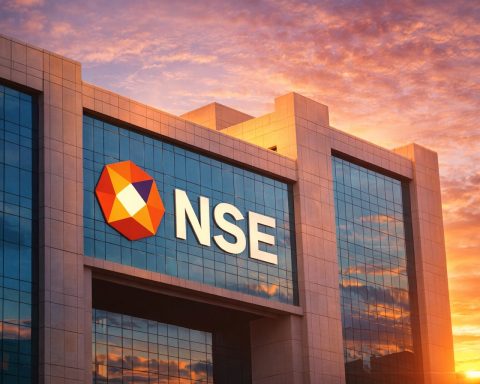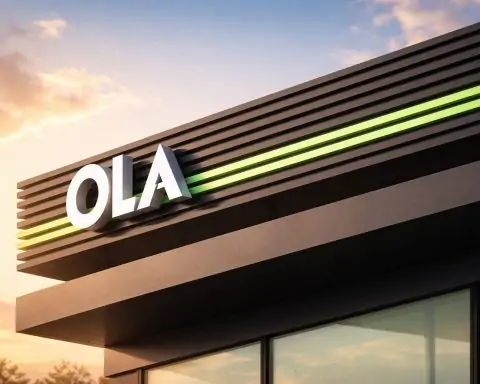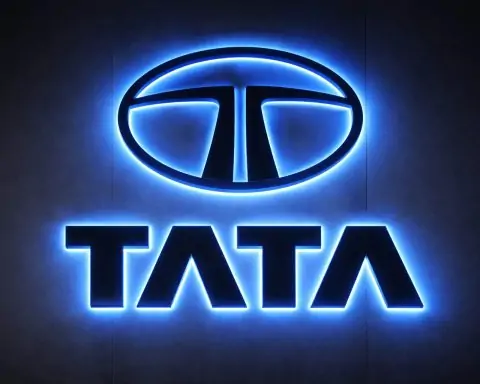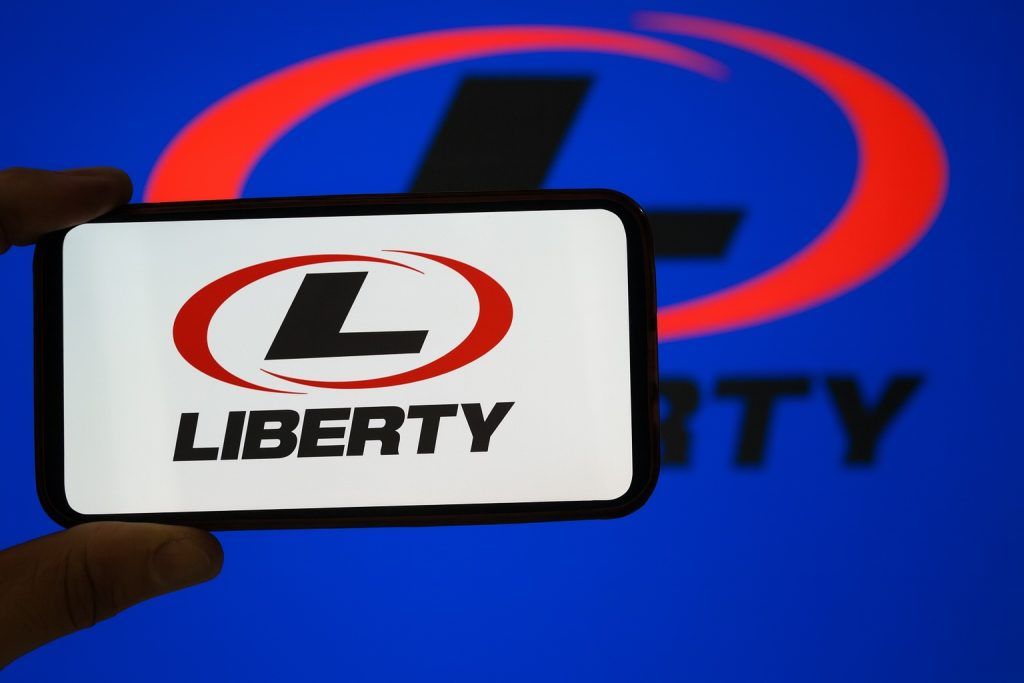Key Facts – October 18, 2025
- New 2025 Highs: Gilead Sciences (NASDAQ: GILD) stock surged to about $123 per share on Oct. 17, 2025 – jumping over 4% intraday to a fresh 52-week high [1] [2]. The rally crowns a nearly 47% year-to-date climb, vastly outperforming the broader biotech sector’s single-digit gains [3]. GILD’s market capitalization now hovers around $150 billion [4].
- Patent Victory Fuels Optimism: Investors cheered a patent settlement that delays any U.S. generic competition for Biktarvy – Gilead’s top-selling HIV therapy – until 2036, three years past its original exclusivity period [5] [6]. Analysts hailed the deal as a “significant positive,” effectively extending Gilead’s HIV franchise and removing a major overhang on the stock [7].
- HIV Breakthrough & Uptake: Gilead’s new long-acting HIV prevention shot, Yeztugo (lenacapavir), won FDA approval as the first-ever twice-yearly PrEP injection [8]. Early reception has been strong – Moody’s upgraded Gilead’s credit outlook citing Yeztugo’s launch momentum [9], and the U.S. CDC gave a “resounding endorsement” for the drug in new HIV prevention guidelines [10]. This bolsters confidence in Gilead’s innovation pipeline.
- Analysts Bullish but Split: Wall Street sentiment is broadly bullish on GILD. Firms like JPMorgan and Redburn have recently hiked price targets into the mid-$140s on Gilead’s growth prospects [11]. Wells Fargo called the Biktarvy patent win a “big deal,” estimating it adds $6–$12 per share in value and reaffirming an Overweight rating with a $140 target [12]. However, the average 12-month target is ~$118 [13] – near the current price – and some analysts (e.g. RBC Capital) urge caution amid potential U.S. drug pricing pressures on Gilead’s HIV drugs [14].
- Financial Momentum & Outlook: Gilead’s latest earnings impressed. Q2 2025 revenue rose ~2% YoY to $7.1 billion, narrowly beating forecasts [15], and adjusted EPS topped estimates ($2.01 vs $1.95) [16]. Management raised full-year 2025 guidance, citing robust demand for core therapies, which sent shares up 7–8% after the August earnings release [17] [18]. With Q3 2025 results due on Oct. 30, investors are watching whether Gilead can sustain this growth trajectory.
GILD Stock Price Rallies to New Heights
Gilead’s stock has been on a tear in recent weeks, far outpacing the broader market. After trading in the high $110s earlier in October, GILD spiked 4.2% on Friday, Oct. 17, to close at $122.81 [19] [20]. That rally marked a new 2025 high for the biotech stalwart and brings its year-to-date gain to roughly 45–47% [21]. By comparison, the Nasdaq Biotechnology Index is up only in the single digits over the same period [22]. The recent jump – adding billions to Gilead’s market cap – reflects mounting investor enthusiasm driven by a confluence of positive news. “Investors have cheered a string of positive catalysts: strong earnings, a fortified HIV franchise, and growing pipeline prospects,” TechStock² noted in an analysis [23].
Notably, this latest upswing builds on momentum from the summer. In August, Gilead’s Q2 earnings beat expectations, and the company raised its full-year outlook, citing surging demand for its core HIV treatments and other drugs. That earnings surprise sent GILD shares up about 7–8% in a single day [24] [25]. Since then, the stock has continued climbing to new highs as optimism grows about Gilead’s growth trajectory heading into year-end [26].
Patent Win Extends HIV Drug Dominance
A key driver behind GILD’s October rally is a major patent victory for its flagship HIV treatment Biktarvy. Earlier this month, Gilead settled patent litigation with multiple generic drugmakers (including Lupin, Cipla, and Laurus Labs) in a deal that blocks any generic Biktarvy in the U.S. until April 1, 2036 [27] [28]. This is three years later than the drug’s previous 2033 exclusivity timeline, effectively securing Biktarvy’s status as a cash cow for an extra few years. Biktarvy, a once-daily pill for HIV, is Gilead’s top-selling product (with $6.7 billion in sales in the first half of 2025) and commands over 50% of the U.S. HIV treatment market [29] [30].
Analysts and investors greeted the patent news warmly. Leerink Partners analysts called the settlement “a significant positive” for Gilead, noting Biktarvy’s sales are still growing and its dominant market share could expand further [31]. The resolution removes a major “patent cliff” risk that had been hanging over GILD’s valuation. Wells Fargo likewise emphasized the importance of the extended exclusivity, calling it a “big deal” that gives Gilead a longer revenue runway – adding an estimated $6–$12 per share in value – and even “puts [Gilead] in the bracket of AbbVie” in terms of lengthy drug franchises [32]. In other words, the deal solidifies Gilead’s core HIV business akin to how AbbVie benefited from prolonged exclusivity on its blockbuster Humira. Gilead’s stock jumped in step with the announcement, suggesting investors “clearly agree” with the upbeat assessment [33].
Breakthrough HIV Prevention Shot Boosts Pipeline
At the same time, Gilead is rolling out new innovations to ensure it remains the leader in HIV treatment and prevention for years to come. In June 2025, the FDA approved lenacapavir – branded as Yeztugo – the first and only twice-yearly injectable PrEP for HIV prevention [34]. PrEP (pre-exposure prophylaxis) medications are taken by healthy individuals to prevent HIV infection. Yeztugo’s ultra-long-acting profile (just two shots a year) addresses a key challenge in HIV prevention: adherence to daily pills. By eliminating the need for daily dosing, the new injection aims to broaden uptake of preventive therapy, especially among people who struggle with or dislike taking pills.
The early signs are very encouraging. Moody’s Investors Service raised Gilead’s credit outlook to “Positive” shortly after Yeztugo’s debut, citing the new product’s launch momentum as a key factor [35]. Physicians have also responded favorably – analysts at Rothschild Redburn reported “strong physician feedback on Yeztugo” when upping their projections for Gilead [36]. And in a significant vote of confidence from public health authorities, the U.S. CDC (Centers for Disease Control) gave a “resounding endorsement” of Yeztugo in its latest HIV prevention guidelines [37]. The CDC’s backing means Yeztugo is recommended as a preferred option for appropriate patients, which could further drive its adoption in the coming months.
All told, Gilead’s HIV franchise is enjoying a renaissance: a prolonged runway for its blockbuster treatment and a pioneering new prevention therapy coming to market. These developments “strengthen Gilead’s dominance in HIV and reassure investors that the cornerstone business will remain a cash cow” well into the next decade [38], even as older drugs eventually face patent expirations. Gilead itself now expects its HIV-related sales to grow about 3% in 2025, whereas earlier it had forecast flat revenues – an upbeat revision attributed to Biktarvy’s resilience and the addition of lenacapavir/Yeztugo [39] [40].
Financial Performance Underpins Confidence
Behind the stock’s surge is a foundation of improving financial results. In the second quarter of 2025, Gilead delivered better-than-expected earnings. Revenue for Q2 came in at $7.1 billion (up roughly 2% year-over-year), topping Wall Street’s $6.9 billion consensus [41]. Adjusted earnings were $2.01 per share, a few cents above estimates [42], while GAAP diluted EPS jumped to $1.56 from $1.29 a year prior [43]. The growth was fueled largely by HIV drugs (Biktarvy sales rose 9% YoY to $3.5 billion in Q2 [44], and PrEP pill Descovy saw record demand [45]) as well as oncology (Trodelvy cancer therapy sales climbed 14% to $364 million [46]).
Crucially, Gilead’s management raised its full-year 2025 guidance after Q2, predicting higher product sales and earnings than previously forecast [47] [48]. They cited “robust Biktarvy and Descovy performance” and optimism for the Yeztugo rollout as reasons for the improved outlook [49] [50]. This vote of confidence in Gilead’s trajectory caused an immediate stock pop – shares jumped over 7% on the earnings news [51]. It also set positive expectations for the remainder of the year. Gilead has now strung together several quarters of solid results and upward revisions, reversing the narrative from a few years ago when growth was stagnating.
Investors are now eagerly awaiting third quarter 2025 results, which Gilead is scheduled to release on October 30, 2025 [52]. Analysts will be watching whether the company can keep up its earnings beat streak and whether sales of new products like Yeztugo are ramping up as projected. Any updated guidance or commentary on 2026 will also be closely parsed, especially with macro pressures (like potential drug pricing reforms) on the horizon. For now, Gilead’s improving fundamentals – combined with its strategic wins in HIV – have provided a sturdy backdrop for the stock’s rally.
Analyst Quotes: Upgrades and Cautions
Wall Street analysts have been increasingly upbeat about Gilead in light of its recent successes. In September, JPMorgan gave GILD a Street-high 12-month price target of $145, one of the most optimistic outlooks among major firms [53]. More recently, UK-based Redburn Partners raised their target to $143 (from around $136), specifically citing “strong physician feedback” for Yeztugo’s launch and broad enthusiasm for Gilead’s HIV franchise momentum [54]. These bullish calls signal that some experts see significant further upside for the stock if Gilead executes well.
Even traditionally cautious analysts are revising their views. Morningstar analysts, for example, increased their fair value estimate for GILD to $125 per share (up from $115) after the Biktarvy patent settlement, noting the extended exclusivity meaningfully boosts long-term cash flows [55]. And as mentioned, Wells Fargo not only applauded the patent deal but also suggested it puts Gilead in an elite class of pharma companies with durable franchises [56]. Wells Fargo projects the patent extension alone could add up to $12 per share in discounted value, and it reaffirmed an Overweight rating (equivalent to a “Buy”) with a $140 price target [57].
However, not everyone is pounding the table to buy at current levels. With the stock already near $123 (above its previous consensus target of around $118 [58]), some analysts urge moderation. RBC Capital Markets recently cautioned that if U.S. drug pricing reforms or political pressures zero in on high-cost drugs like Biktarvy, it could trim Gilead’s future profits [59]. In one scenario, RBC estimated GILD’s value might dip ~5% if certain pricing policies were enacted. There are also reminders that Gilead’s growth, while solid, is not explosive – the company faces patent cliffs in the later 2020s and competition in every segment. “The stock is no longer the bargain it was a year ago, so some of the easy gains are behind us,” one Yahoo Finance columnist noted, suggesting prospective investors consider the risk-reward now that GILD has rallied so strongly. Still, the prevailing sentiment leans optimistic that Gilead’s management can navigate these challenges.
Expanding Beyond HIV: Oncology and New Therapies
Gilead made its name – and the bulk of its revenue – in antiviral therapies (HIV and hepatitis). Now the company is pushing aggressively into new arenas like oncology and cell therapy to drive its next leg of growth. This diversification effort was on full display at the ESMO 2025 oncology conference in mid-October, where Gilead had a prominent presence [60]. The company presented late-breaking Phase 3 trial results for Trodelvy, its breast cancer drug, showing promising data in earlier-line treatment of metastatic triple-negative breast cancer [61]. Trodelvy is already approved for later-line use in this aggressive cancer; success in first-line settings could significantly expand its patient reach. Gilead also showcased early research on an anti-TIGIT immunotherapy and other oncology programs, underscoring what it calls a “bold commitment to transform cancer care” [62]. While Gilead’s oncology portfolio is still relatively small (Trodelvy sales are a few hundred million dollars vs. HIV sales in the billions), analysts see “significant long-term opportunity” if these drugs prove effective in broader indications [63].
In addition to internal R&D, Gilead is inking deals to bolster its pipeline. On October 17, 2025 (the same day the stock hit new highs), Gilead’s Kite Pharma subsidiary announced a high-profile partnership with China’s Pregene Biopharma to co-develop next-generation CAR-T cell therapies for cancer [64]. CAR-T is a form of cell therapy that engineers a patient’s immune cells to fight tumors. The agreement involves $120 million upfront and up to $1.52 billion in milestone payments to Pregene [65], making it a $1.6 billion+ bet on cutting-edge in vivo CAR-T technology (which aims to deliver CAR-T treatments directly inside patients, potentially making them easier to administer) [66]. A Kite spokesperson said the collaboration will integrate complementary technologies and “speed up clinical proof-of-concept” for these next-gen therapies [67] [68].
Gilead’s increased commitment to cell therapy comes as some rivals have actually been pulling back. In early October, Japan’s Takeda and Denmark’s Novo Nordisk both announced they would scale down in-house cell therapy R&D due to high costs, opting to seek partners instead [69]. In contrast, Gilead – along with fellow CAR-T leader Bristol Myers Squibb – is doubling down on the field [70]. (BMS, for instance, just made a similar $1.5 billion acquisition to boost its cell therapy capabilities, and Gilead itself bought a startup called Interius for $350 million in August to acquire an in vivo CAR-T platform [71] [72].) By investing in these partnerships and technologies, Gilead is signaling confidence that advanced cell and gene therapies will become a major growth avenue in the future, complementing its dominance in HIV.
Competitive Position and Industry Landscape
Within the biotech/pharma industry, Gilead Sciences now stands as a hybrid of a steady, large-cap pharma business and an ambitious biotech innovator. In its core HIV market, Gilead maintains a market-leading position against rivals like GSK’s ViiV Healthcare. GSK’s suite of HIV drugs (such as the injectable treatment Cabenuva and the bi-monthly PrEP shot Apretude) are growing, but Gilead’s portfolio still leads in sheer volume [73] [74]. The launch of Yeztugo, offering the only twice-yearly preventative, further cements Gilead’s competitive edge in HIV – an area where it has decades of expertise. Gilead is also collaborating with Merck on a potential once-daily oral combo of lenacapavir plus Merck’s islatravir for HIV treatment, now in Phase 3 trials [75] [76]. This shows Gilead’s willingness to partner even with competitors to advance HIV care, keeping it at the forefront of innovation.
Beyond antivirals, Gilead’s push into oncology and immunotherapy pits it against heavyweights like Roche, Merck, and AstraZeneca. The company is a relative newcomer in cancer, but drugs like Trodelvy (which it acquired in 2020) have given it a foothold. Analysts note that Gilead’s valuations – around 14x forward earnings – are still reasonable compared to large pharma peers [77], suggesting the market has not yet fully priced in big oncology success. If Gilead’s cancer bets (Trodelvy, anti-TIGIT, cell therapy, etc.) pay off, it could re-rate closer to a diversified pharma leader. On the other hand, any stumbles could keep GILD trading at a discount. In the competitive CAR-T space, Gilead (with its Yescarta and Tecartus products) and BMS (with two CAR-T therapies) lead the market, while others like Novartis have smaller roles. Gilead’s new in vivo CAR-T initiatives aim to leapfrog current limitations of CAR-T (which is complex and labor-intensive) – an area where others like AbbVie and AstraZeneca are also investing [78]. This illustrates Gilead’s strategy of staying ahead of the curve technologically to secure a future edge.
Overall, Gilead’s peers have taken notice of its resurgence. After a period in the late 2010s when GILD shares lagged (due to declining hepatitis C sales and questions about the pipeline), the company’s recent moves have reinvigorated its profile. By focusing on its strengths in antivirals, strategically expanding into new fields, and delivering consistent earnings, Gilead is increasingly seen as a top-tier player in biotech again. Its competitive positioning is one of a stable HIV franchise (somewhat akin to an annuity business) combined with high-upside “pipeline shots” in cancer and immunotherapy. This dual approach helps insulate Gilead from being too one-dimensional, while giving investors exposure to cutting-edge biotech developments.
Outlook: Cautious Optimism for the Future
Looking ahead, the big question is: Can Gilead’s stock rally continue after such a strong run? In the short term, much will depend on upcoming catalysts like the Q3 earnings report and any new data on key drugs. If Gilead shows accelerating uptake of Yeztugo, continued HIV revenue growth, or positive clinical results in oncology, it could propel shares higher. The company’s own forecast for 2025 (product sales in the high $28 billion range [79]) appears within reach given the current momentum. Some analysts even speculate GILD could initiate a dividend boost or share buyback with its robust cash flows, which may attract income-focused investors.
In the medium term, analyst forecasts diverge somewhat. The bullish camp sees GILD possibly climbing further into the $130s or $140s, fueled by its expanding pipeline and potential new blockbuster drugs [80] [81]. They argue that Gilead’s pipeline bets – in HIV, oncology, and beyond – give it multiple shots on goal that aren’t fully reflected in today’s stock price. Additionally, Gilead’s strong balance sheet and steady HIV cash flows provide a safety net to fund R&D and acquisitions. On the flip side, the more cautious observers point out that much of the easy upside has been realized after a ~40% gain this year. They warn of external risks: for example, drug pricing reform discussions in Washington (which could target high-cost medicines like HIV therapies), or pipeline setbacks (a failed trial in oncology could dampen enthusiasm). There’s also competition to consider – e.g., if a rival develops a better HIV vaccine or cure down the road, it could disrupt Gilead’s long-term dominance, though nothing imminent is on the horizon.
For now, the sentiment around Gilead Sciences, Inc. is optimistic but measured. The company has delivered a string of wins that have shifted its narrative from stagnation to growth. It has strengthened its core business and opened new avenues that could drive future expansion. GILD stock’s strong performance in 2025 reflects that improved outlook. As one market watcher quipped, “Gilead has its groove back.” The coming months will show whether it can keep that groove – by executing on its pipeline, navigating industry challenges, and continuing to innovate in the fight against diseases. If it can, the recent highs for GILD may just be a stepping stone, but if not, investors may see the stock take a breather. Either way, Gilead’s resurgence has made it one of biotech’s most closely watched stories heading into 2026.
Sources: Gilead Sciences stock analysis and news by TechStock² [82] [83]; Nasdaq/Zacks Equity Research [84] [85]; FierceBiotech [86] [87]; Reuters [88] [89]; TipRanks (The Fly) [90]; Gilead press releases and financial reports [91] [92]; and other industry sources.
References
1. ts2.tech, 2. stockanalysis.com, 3. ts2.tech, 4. ts2.tech, 5. ts2.tech, 6. ts2.tech, 7. ts2.tech, 8. ts2.tech, 9. ts2.tech, 10. ts2.tech, 11. ts2.tech, 12. www.tipranks.com, 13. ts2.tech, 14. ts2.tech, 15. www.nasdaq.com, 16. www.nasdaq.com, 17. ts2.tech, 18. www.nasdaq.com, 19. stockanalysis.com, 20. stockanalysis.com, 21. ts2.tech, 22. ts2.tech, 23. ts2.tech, 24. ts2.tech, 25. www.nasdaq.com, 26. ts2.tech, 27. ts2.tech, 28. ts2.tech, 29. www.nasdaq.com, 30. www.nasdaq.com, 31. ts2.tech, 32. www.tipranks.com, 33. ts2.tech, 34. ts2.tech, 35. ts2.tech, 36. ts2.tech, 37. ts2.tech, 38. ts2.tech, 39. www.nasdaq.com, 40. www.nasdaq.com, 41. www.nasdaq.com, 42. www.nasdaq.com, 43. mlq.ai, 44. www.nasdaq.com, 45. www.nasdaq.com, 46. www.nasdaq.com, 47. www.nasdaq.com, 48. www.nasdaq.com, 49. www.nasdaq.com, 50. www.nasdaq.com, 51. www.nasdaq.com, 52. investors.gilead.com, 53. ts2.tech, 54. ts2.tech, 55. www.morningstar.com, 56. www.tipranks.com, 57. www.tipranks.com, 58. ts2.tech, 59. ts2.tech, 60. ts2.tech, 61. ts2.tech, 62. ts2.tech, 63. ts2.tech, 64. ts2.tech, 65. ts2.tech, 66. ts2.tech, 67. www.fiercebiotech.com, 68. www.fiercebiotech.com, 69. ts2.tech, 70. ts2.tech, 71. www.fiercebiotech.com, 72. ts2.tech, 73. www.nasdaq.com, 74. www.nasdaq.com, 75. www.nasdaq.com, 76. www.reuters.com, 77. www.nasdaq.com, 78. www.fiercebiotech.com, 79. www.tikr.com, 80. ts2.tech, 81. www.tipranks.com, 82. ts2.tech, 83. ts2.tech, 84. www.nasdaq.com, 85. www.nasdaq.com, 86. www.fiercebiotech.com, 87. www.fiercebiotech.com, 88. www.reuters.com, 89. www.reuters.com, 90. www.tipranks.com, 91. www.nasdaq.com, 92. www.tikr.com
